Outside Is America by Lee Quiñones at Woodbury House
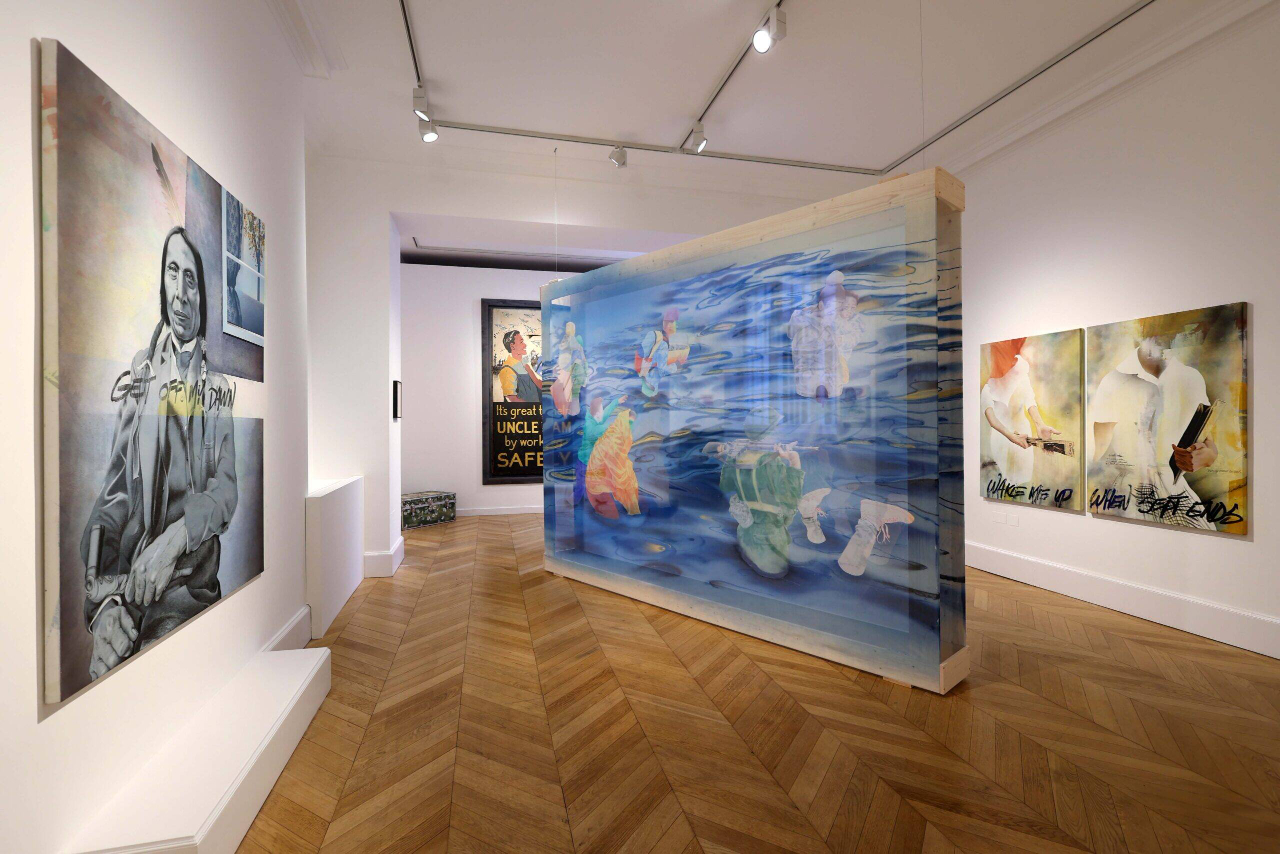
New York in the mid-1970s was a city in dire straits, beset by economic hardship and urban decay. And yet in the midst of this severe social degradation, a new and vibrant cultural landscape took shape with the emergence of hip-hop, breakdance and graffiti. The latter would eventually propel the likes of Jean-Michel Basquiat and Keith Haring into the public eye. Another key figure at the heart of the graffiti art form’s revolution first sprayed his name on a train car at the tender age of 14. 51 years later, the Puerto-Rican born New York artist, Lee Quiñones, is lauded by both the street art and gallery communities: rarely waters crossed with equal aplomb. Now, for the first time in 40 years, an exhibition of his work, entitled Outside Is America is being held in a London gallery, Woodbury House, in Mayfair.
As a young man, Quiñones was one of the stars of the seminal 1982 hip hop culture film, Wild Style. Although not featured in the current show, the fictional movie captures something of the Puerto Rican-American’s real-life subversive spirit. Playing a semi-biographical graffiti artist going by the name of Zorro, Quiñones is seen evading police arrest whilst painting a subway car in New York. Another scene alludes to how the art world made overtures towards him with a view to his exhibiting in more traditional settings. Viewers find “Zorro” first resisting his companions’ shift to commissioned murals, fearing a loss of integrity, before deciding to embrace the new artistic opportunities. Quiñones has long since adopted a more all-encompassing outlook, shaking up the art world’s lapels to establish street art as a form worthy of international recognition. The exciting, raw intensity of the artist’s creativity saw his remarkable rise to prominence at a young age, his work being chosen for New York’s groundbreaking White Columns exhibition in 1980 and New York/New Wave at MoMA PS1 in 1981. He even appeared, naturally spray can in hand, in Blondie’s pop video for their hit single, Rapture (1981).
Using the medium of graffiti to deliver social critique, the artist had put himself in the spotlight with his 1979 double-car mural Stop the Bomb, a call for an end to aggressive Cold War rhetoric at a time of heightened tensions with the Soviet Union. That same year, he brought his spray-painting mastery, alongside Fab 5 Freddy, to his first formal exhibition at Galleria La Medusa in Rome. Lee, a work created on canvas for this significant Italian show, featuring Quiñones’s first name in his inimitable lettering, has survived the test of time to appear on Woodbury House’s walls. In 1978, the pioneering New Yorker had arguably planted the seed for the global street art movement by transforming a neighbourhood handball court into a giant colourific mural. “Howard the Duck”, the undeniable star of that creation is revived by the artist here in London in the form of an archival pigment print from 2014.
Over the years, this influential figure in the graffiti movement has clearly lost none of his appetite for raising societal issues. Money and more specifically the dollar: the very core of the American dream and promoter of avarice rolled into one, is a recurring theme in recent works here. American Splendor from this year is a large, mixed media painting on poly-cotton canvas depicting a gigantic man bestride the Empire State building. Resembling a monstrously overgrown “Finance Bro”, the figure reaches out rather desperately for encircling paper planes that turn out to be actual dollar bills. Instantly recalling the classic 1933 film, King Kong, made at the height of the Great Depression, one is reminded that the pursuit of monetary gain, shaping so much of human civilisation, is both exhausting and unfulfilling. Elsewhere, one finds Quiñones commenting on how money holds us all in a form of captivity. In Money Can’t Buy Love (2010), a naked woman curls herself into a tight ball within a shopping trolley holding her head, the image rendered on top of a real birchwood crate. The artist has stuck fragments of dollar bills to the structure, which seem to hound the stricken figure as she faces the endless need to make money whilst realising financial success is not always accompanied by love or contentment.
As someone who immigrated to the United States himself in early life, Quiñones is found here casting an informed judgmental eye on America’s treatment of marginalised communities. One emotive work, Red Dawn (2021), depicts Red Cloud, the leader of the Native American Lakota people, superimposed on top of a white and grey background, the constituent shapes of which allude to the Stars and Stripes. In reference to European settlers’ betrayal of land acquisition agreements, the words “Get off my Dawn” are written across the centre, a twist on “Get off my Lawn”. Quiñones, of Native American descent himself, reveals sympathy for the suffering of his ancestors whilst engaging in the sort of wordplay that has long been a feature of his work. In another memorable work nearby, No Strings Attached (2021), Chuck D of Public Enemy fame appears as a puppet cut from his strings, conjuring up ideas of displacement and manipulation.
Quiñones’s mobilisation of language is constantly in evidence at Woodbury House. After the New Yorker had become part of the East Village art scene in the early 1980s, a visit by the major art dealer Mary Boone would spur him to reshape his practice. Noticing Quiñones’s studio walls were covered by his written comments, Boone expressed an interest in exhibiting them in her gallery. Subsequently, the artist started cutting up fragments of these walls inscribed with text and paint marks. Some of these “tablet works”, as he calls them, feature in the current exhibition. Tablet #25 (2005) pulls no punches with its handwritten phrase: “There are those that have a rich history in taking from the poor.” Other works like Tablet #9 (2005) reveal the artist’s scorn for the dissemination of misinformation he sees in the USA today, alongside what he views to be a stark decline in political leadership.
In this time of conflicting socio-political narratives within the US, Quiñones’s sheer frustration is borne out in the floor-based installation, Heart in a Hurricane (2009-2025). Featuring a self-portrait of the artist clutching a giant painted rose alongside a real, rather damaged Stars and Stripes flag, it finds him viewing his nation to be in a state of crisis with no clarity of leadership, in his words: “a ship with a wheel but no rudder.” Once again, this pioneering figure is using his artistic voice to bring into sharp relief the social and civil unrest of the present era. In a career spanning half a century, Lee Quiñones has played a pivotal role in ensuring a blurring of the boundaries between street and gallery art. The former resident of New York’s Lower East Side, who painted around 125 subway cars over ten years together with the Fabulous Five Crew, now has artwork in the permanent collections of some of the world’s most prestigious museums, including MoMA and the Whitney Museum of Art. Outside Is America at Woodbury House represents a long overdue opportunity for a British audience to see at first hand the still markedly socially-political work of this icon of street art, who has long since evolved into an internationally acclaimed painter.
James White
Photo: Courtesy of Woodbury House
Outside Is America by Lee Quiñones is at Woodbury House from 16th October until 28th November 2025. For further information or to book, visit the exhibition’s website here.


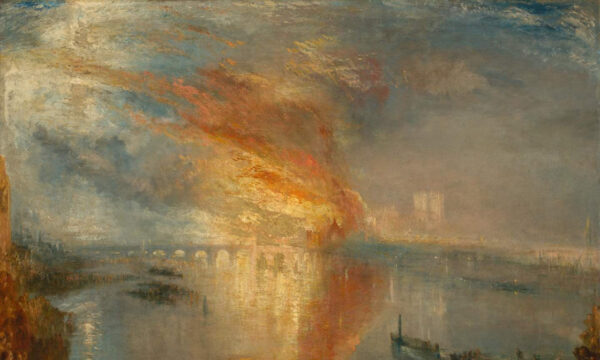

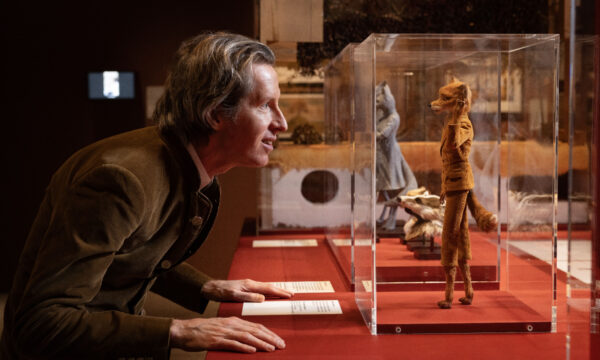

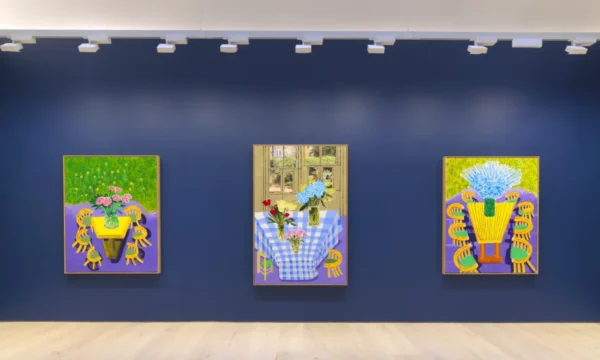
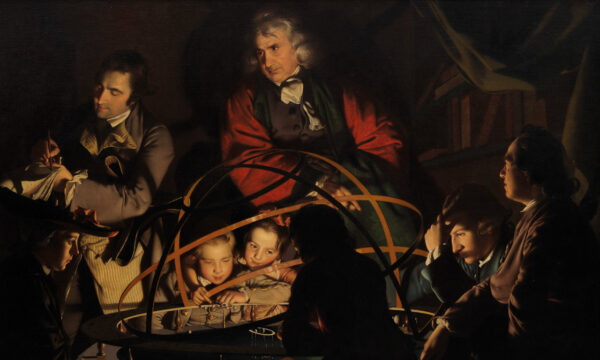
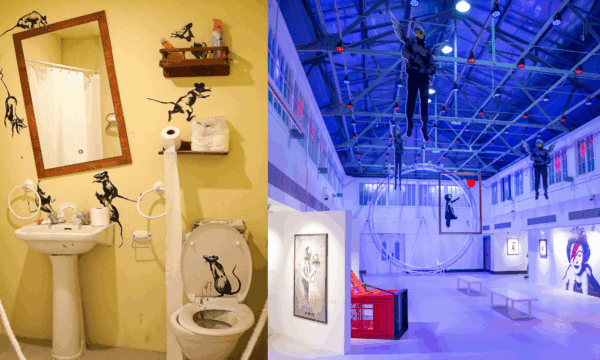
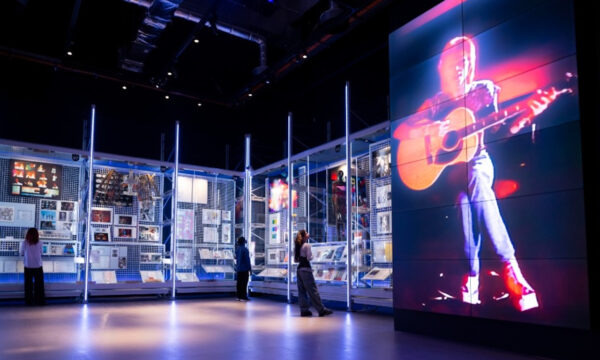
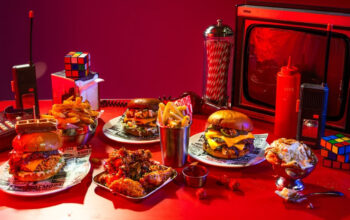













Facebook
Twitter
Instagram
YouTube
RSS